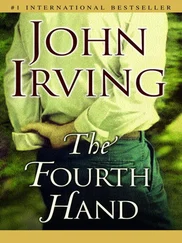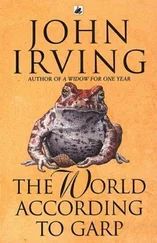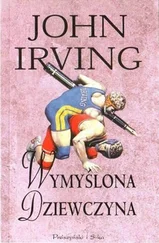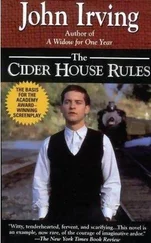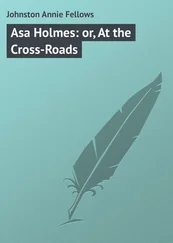A case in point was Dr. Daruwalla’s closest dwarf acquaintance in Bombay; in the vernacular of friendship, Farrokh and Vinod went back a long way, for the dwarf was the doctor’s most visceral connection to the circus—Vinod was the first dwarf whom Dr. Daruwalla had asked for blood. They had met in the examining room of the doctor’s office at the Hospital for Crippled Children; their conversation coincided with the religious holiday of Diwali, which had brought the Great Blue Nile Circus to Bombay for an engagement at Cross Maidan. A dwarf clown (Vinod) and his normal wife (Deepa) had brought their dwarf son (Shivaji) to the hospital to have the child’s ears examined. Vinod had never imagined that the Hospital for Crippled Children concerned itself with ears —ears weren’t a common area of orthopedic complaint—but the dwarf correctly assumed that all dwarfs were cripples.
Yet the doctor could never persuade Vinod to believe in the genetic reasons for either his or his son’s dwarfism. That Vinod came from normal parents and was nonetheless a dwarf was not in Vinod’s view the result of a mutation. The dwarf believed his mother’s story: that, the morning after she conceived, she looked out the window and the first living thing she saw was a dwarf. That Vinod’s wife, Deepa, was a normal woman—“almost beautiful,” by Vinod’s description—didn’t prevent Vinod’s son, Shivaji, from being a dwarf. However, in Vinod’s view, this was not the result of a dominant gene, but rather the misfortune of Deepa forgetting what Vinod had told her. The morning after Deepa conceived, the first living thing she looked at was Vinod, and that was why Shivaji was also a dwarf. Vinod had told Deepa not to look at him in the morning, but she forgot.
That Deepa was “almost beautiful” (or at least a normal woman), and yet she was married to a dwarf—this was the result of her having no dowry. She’d been sold to the Great Blue Nile Circus by her mother. And since Deepa was still very much a novice trapeze artist, she earned almost no money at all. “Only a dwarf would be marrying her,” Vinod said.
As for their child, Shivaji, recurrent and chronic middle-ear infections are common among achondroplastic dwarfs until the age of 8 or 10; if untreated, such infections often lead to significant hearing loss. Vinod himself was half deaf. But it simply wasn’t possible for Farrokh to educate Vinod on this matter, or on other matters pertaining to the genetics of his and Shivaji’s type of dwarfism; his so-called trident hands, for example—the stubby fingers were characteristically splayed. Dr. Daruwalla also noted the dwarf’s short, broad feet and the flexed position of his elbows, which could never be fully extended; the doctor tried to make Vinod admit that, like his son’s, his fingertips reached only to his hips, his abdomen protruded and—even lying on his back—the dwarf exhibited the typical forward curvature of the spine. This lumbar lordosis and a tilted pelvis explain why all dwarfs waddle.
“Dwarfs are just naturally waddling,” Vinod replied. He was religiously stubborn and utterly unwilling to part with as much as a single Vacutainer of his blood. There he sat on the examining table, shaking his head at Dr. Daruwalla’s theories of dwarfism.
Vinod’s head, like the heads of all achondroplastic dwarfs, was exceedingly large. His face failed to convey a visible intelligence, unless a bulging forehead could be attributed to brain power; the midface, again typical of achondroplasia, was recessed. The cheeks and the bridge of the nose were flattened, although the tip of the nose was fleshy and upturned; the jaw protruded to such a degree that Vinod’s chin was prominent; and while his thrusting head did not communicate the greatest common sense, Vinod’s overall manner proclaimed a personality of great determination. His aggressive appearance was further enhanced by a trait common among achondroplastic dwarfs: because their tubular bones are shortened, their muscle mass is concentrated, creating an impression of considerable strength. In Vinod’s case, a life of tumbling and other acrobatics had given him especially well delineated shoulder muscles; his forearms and his biceps bulged. He was a veteran circus clown, but he looked like a miniature thug. Farrokh was a little afraid of him.
“And just what are you wanting with my blood?” the dwarf clown asked the doctor.
“I’m looking for that secret thing which made you a dwarf,” Dr. Daruwalla replied.
“Being a dwarf is no secret!” Vinod argued.
“I’m looking for something in your blood that, if I find it, will help other people not to give birth to dwarfs,” the doctor explained.
“Why are you wanting to put an end to dwarfs?” the dwarf asked.
“It doesn’t hurt to give blood,” Dr. Daruwalla reasoned. “The needle doesn’t hurt.”
“All needles are hurting,” Vinod said.
“So you’re afraid of needles?” Farrokh asked the dwarf.
“I am just needing my blood right now,” Vinod answered.
The almost-beautiful Deepa wouldn’t permit the doctor to prick her dwarf child with a needle, either, although both Deepa and Vinod suggested that the Great Blue Nile Circus, which was in Bombay for another week, was full of other dwarfs Who might give Dr. Daruwalla their blood. Vinod said he’d be happy to introduce the doctor to the Blue Nile’s clowns. Furthermore, Vinod advised the doctor to bribe the clowns with alcohol and tobacco, and it was at Vinod’s prompting that Farrokh revised his stated reason for wanting the dwarfs’ blood. “Tell them you are using their blood to give strength to a dying dwarf,” Vinod suggested.
This was the way the dwarf-blood project began. It had been 15 years ago when Dr. Daruwalla drove to the circus grounds at Cross Maidan. He brought his needles, his plastic needle holders, his glass vials (or Vacutainers). To bribe the dwarfs, he brought two cases of Kingfisher lager and two cartons of Marlboro cigarettes; according to Vinod, the latter were popular among his fellow clowns because of the dwarfs’ high regard for the Marlboro Man. As it turned out, Farrokh should have left the beer at home. In the stillness of the early-evening heat, the Great Blue Nile’s clowns drank too many Kingfishers; two dwarfs fainted while the doctor was drawing their blood, which provided further evidence for Vinod that he should retain every drop of his own.
Even poor Deepa guzzled a Kingfisher; shortly before her performance, she complained of a slight dizziness, which was exacerbated when she hung by her knees from the high trapeze. Deepa then tried swinging in a sitting position, but the heat had risen to the top of the tent and the dwarf’s wife felt that her head was trapped in the hottest possible air. She felt only a little better when she gripped the bar in both hands and swung herself with more and more force; hers was the simplest exchange for an aerialist to master, but she still hadn’t learned how to let the catcher grab her wrists before she tried to grab his. Deepa simply would release the bar when her body was parallel to the ground; then she’d throw back her head so that her shoulders dropped below the level of her feet, and the catcher would catch hold of her by her ankles. Ideally, when the catcher caught her, Deepa’s head was approximately 50 feet above the safety net, but the dwarf’s wife was a beginner and she let go of the trapeze before her body was fully extended. The catcher had to lunge for her; he was able to grab only one of her feet, and he caught her at an unfortunate angle. Deepa screamed so loudly when her hip was dislocated that the catcher thought the best thing he could do for her was to drop her into the safety net, which he did. Dr. Daruwalla had never seen a more awkward fall.
Читать дальше


